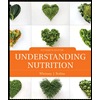
Concept explainers
Interpretation:
Several use of
Concept Introduction:
The name of the carboxylic acid itself implies that it is acidic. Addition of carboxylic acid to water results in ionization. Hydrogen ion transfer occurs from carboxylic acid to water and hydronium ion is formed. Carboxylate ion is also formed due to the loss of hydrogen ion from carboxylic acid.
Carboxylate ion is the negative ion which is formed when one or more acidic protons are lost from carboxylic acid. Similar to carboxylic acid it reacts with strong base to form carboxylic acid salt and water.
Salt of carboxylic acid is more soluble in water than the corresponding carboxylic acid. They increase the pH of food in which they are used.
Trending nowThis is a popular solution!

Chapter 16 Solutions
EBK GENERAL, ORGANIC, AND BIOLOGICAL CH
- May cause seizures when administered in large doses. TO.Diazepam b.Propofol c.Ketamine d.Phenobarbitalarrow_forwardMy question is Explain why you feel numbness when using a topically applied pain cream that contains lidocaine.arrow_forward19.WHAT IS NOT A STIMULANT? A. MARIJUANA B. CAFFEINE C. VIAGRA D. MEPHATAMINES 20. WHAT IS NOT A DEPRESSANT? A. ALCOHOL B. OPIUM C. ASPIRIN D.COCAINE E. VICODIN F. CIGARETTESarrow_forward
- Choose the best from the below ? Peptide hormones interact with what structures on the surface of a cell? a. receptor proteins d. neurotransmittersb. second messenger systems e. digestive enzymesc. pheromonesarrow_forwardImpaired sociability in autistic individuals may involve low levels of A. Serotonin B. Thalidomide C. Oxytocin D. Risperidonearrow_forwardWhich of the following is a pentapeptide and considered as a natural opiate in the body? A. Vasopressin B. Glutathione C. Enkephalin D. Bradykininarrow_forward
- Cocaine is very similar to which of the following in its effects on the central nervous system?a. Seconal b. codeine c. cannabis d. amphetaminearrow_forwardTransmitter release is dependent on the interaction between v-SNAREs and t-SNAREs. The interaction of these proteins leads to vesicle docking and fusion. Which chemical stimulates the interaction between these proteins? a. cholinesterase b. calcium c. potassium d. ionium What is one important difference between organizing and activating effects of hormones? a. Organizing effects take place during an early sensitive period b. Activating effects are more permanent c. Activating effects take place only in the brain d. Organizing effects take place only in the gonadsarrow_forward1).The process by which messages are communicated within the cell is A. Proliferation B.DN transcription C. signal transduction D. migration. 2.) Which of the following medications is a dopamine antagonist? A. Haloperidol B. Granisetron C. Olanzapine D. Dronabinol. 3) what testing should the nurse expect the patient to have prior to beginning treatment with bleomycin? A. Pulmonary function test B. Echocardiogram, C.Lumbar puncture D. Bone marrow biopsy. Please do not plarized & give answer with explanationarrow_forward
- PET can: a. all answers correct b. be used to study cognitive function c. detect relative amounts of neurotransmitters d. detect the decay of radiochemicalsarrow_forwardWhich of the following is NOT true regarding nicotine? a. its psychoactive effects include improved attention, concentration, learning, and memory b. green tobacco sickness affects smokers who use tobacco products that haven’t been properly dried c. stress accelerates nicotine metabolism, driving smokers into nicotine withdrawal faster d. it might be the only addictive chemical in tobacco, but other chemicals in tobacco might operate as catecholamine agonists e. of the main pharmacologic treatments to aid smoking cessation, only Zyban (bupropion) does not lessen withdrawal symptoms through gentle activation of ACh receptorsarrow_forward1. Cortisol: a. is made in the middle zone of the adrenal cortex b. is a glucocorticoid c. has an antiimmunity effect d. all of the above 2. Protein hormones have hormone receptors in the cell: a. both a and c above b. membrane c. nucleus 3. D. cytoplasm The difference between a three- and a two-neuron reflex is that a three-neuron reflex: a. includes an efferent neuron b. includes an afferent neuron c. passes through the dorsal root ganglion d. includes an interneuronarrow_forward
- Essentials of Pharmacology for Health ProfessionsNursingISBN:9781305441620Author:WOODROWPublisher:Cengage
 Understanding Nutrition (MindTap Course List)Health & NutritionISBN:9781337392693Author:Eleanor Noss Whitney, Sharon Rady RolfesPublisher:Cengage Learning
Understanding Nutrition (MindTap Course List)Health & NutritionISBN:9781337392693Author:Eleanor Noss Whitney, Sharon Rady RolfesPublisher:Cengage Learning


